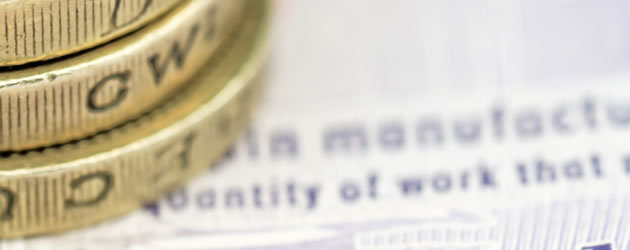
The Pound improved against all of its major currency peers yesterday, bar the US Dollar, as an accidentally large trade triggered a bout of automatic stop-loss orders.
In economic lexicon the term ‘fat finger trade’ refers to an occasion when human error leads to the wrong figure being entered into a computer trading system. Mistakes of this kind are usually harmless, but on some occasions they can lead to serious repercussions, for example if an extra zero or two is assed, as other traders react to the unusually large order. Back in 2006 a trader at Mizuho Securities in Japan cost the company ¥40 billion yen as an unintentionally large short position had to be unwound.
At around three o’clock yesterday afternoon the Pound unexpectedly shot up against the Euro and US Dollar. With little direct economic stimulus, just a fairly innocuous report showing that US Business Inventories stagnated in June, it is widely believed that Sterling’s steep rise was caused by an accidental ‘fat finger’ trade.
GBP/EUR rose through significant resistance levels at 1.1640 and settled at 1.1670 but GBP/USD was unable to hold onto its ‘fat finger’ gains. The Pound advanced rapidly from 1.5440 to 1.5510, but quickly retreated back down again as traders reacted to the unexpected jump.
Following the three o’clock spike Sterling also posted gains of 0.2 cents against the Canadian Dollar, 0.6 cents against the New Zealand Dollar and 0.3 cents against the Australian Dollar.
In the aftermath of the unusual event it is interesting to see how traders reacted. With fears of an end to Fed stimulus having a dampening effect on risk sentiment at the moment, the commodity currencies went with the flow and depreciated against the Pound. With investors fearful that the European Central Bank is considering sucker punching the single currency with another liquidity-boosting scheme to foster credit growth the Euro was also forced lower against Sterling. It seems that, even with Eurozone GDP predicted to have returned to growth in the second quarter, markets are still expecting GBP/EUR to appreciate further over the coming weeks. The US Dollar, however, bucked the trend and clawed back its losses within 15 minutes. This illustrates the extent to which traders are reluctant to short the US Dollar at the moment as we approach September, and a possible slowdown of QE3 asset purchases.
British data printed inline with expectations yesterday as UK CPI inflation slowed from 2.9% to 2.8% but the Pound was not largely affected by the report. This morning’s Bank of England Minutes report will be scoured for signs of discord among policymakers and the Unemployment Report could lead to volatility if the actual score falls either side of the 7.8% predicted. If BoE policymakers appear to be split over the recent forward guidance then interest rate hike bets may be scaled forward, which should boost the Pound. An unexpected fall in Unemployment would also have a positive impact on GBP, as it would bring the indicator one step closer to BoE’s 7.0% target. Conversely, a surprise jump in joblessness would be considered bearish for Sterling.
Across the pond in the States, US Advance Retail Sales printed slightly below forecast at 0.2% in July. However, the report was considered positive for the ‘Greenback’ as it featured a 0.2% upward revision to June’s score and a 7-month high 0.5% figure for sales when automobile transactions are excluded from the survey. The data made it slightly more likely that asset purchases will be slowed in September and this led to US Dollar gains against all of the majors, bar the Pound.

Comments are closed.